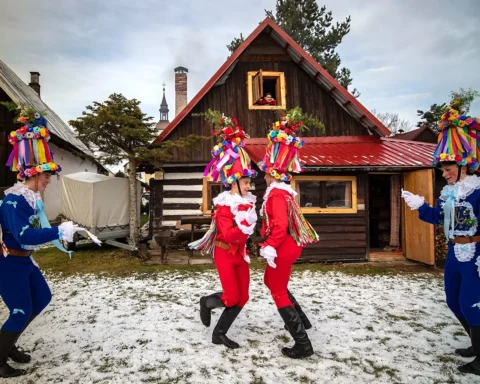Pork, although popular, may not be the most appreciated of meats in Europe. By consumption volume, it loses out to chicken, by value – to game and beef. But if you’re looking for a delicacy, look to Hungary, where its distinctive breed of Mangalica pigs yields some of the best meat available.
Officially created in the 19th century, the Mangalica breed (sometimes called Mangalitsa or Mangaliza due to pronunciation variations) may be as mixed as Austria-Hungary itself, which is where it was created. In 1833 the new breed was officially established. The mix originally resulted from the blending of two types of Hungarian pigs, Bakonyi and Szalontai, together with a Serbian pig and a wild boar. Later, genes from other breeds were also introduced into the concoction.
The creation of new pig breeds in early modern countries in the south of Central Europe has historical roots. During the period when Turks ruled the Balkans, the population of pigs decreased, as happens in Islamic countries. When the pig trade returned, pig herds were led to Slovakian or Hungarian markets from the south. Some pigs would escape the drift during the march to market, later mixing with local pigs and boars.
Mangalica: a unique breed on all fronts
It may be the boar addition to the genetic pool that makes Mangalica so distinctive and funny-looking, deserving the moniker sheep-pig. Its hair is visibly longer than a typical pig’s and curly as a sheep fleece. But its uniqueness also – or maybe mostly – lies in its culinary qualities. Mangalica pork is on the fatter side, which chef’s across the globe will tell you is an essential quality in imbuing meat with more flavor. Some also claim that this fat has less cholesterol.
The new breed, related to the wild boar, was sturdy and easy to keep, especially with their thick, curly hair that helped them stay warm through winters on open pastures. Mangalicas gained significant popularity in the 19th century; however, the pig plague of 1895 soon swept through drifts decimating the breed. As Mangalicas were very prone to the disease, some 95% of the drifts vanished, struggling to repopulate until the 1970s, when the Hungarian state began to support their breeding.
Currently, around 60 thousand Mangalica pigs are produced annually. One of the most concrete pieces of proof of the breed’s exquisite gastronomic value is that it’s often used to make Spanish serrano ham. In Hungary, one of the most sought-after delicacies is Mangalica sausage with minced mint, seasoned with salt, pepper, spices, and, naturally, paprika. Fatty bacon and pork steaks are also delicious.
For some reason, though, you can’t find a warm Mangalica scarf anywhere. Well, at least we can be confident that the Mangalica is still a pig, sheep-like as it may appear.
You may be also interested in our article about Why Polish Bouillon Base Is Called the “Italian Stuff”







